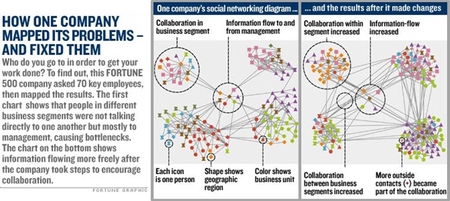

linked to) a given node, but then each adjacent node, in turn, is weighed by its own centrality.Ī node that has a high eigenvector centrality value is not only “highly connected”: it is highly connected with other nodes who are also “highly connected.” Hence, it can be argued that high eigenvector centrality nodes are highly influential ones in a network.Įxamples of using eigenvector centrality measures in research includes studies wanting to uncover influential authors of emerging messages on Twitter. Degree centrality has been criticized as being “too simple” because it does not consider any measures of the whole network beyond the adjacent nodes, but it is nevertheless easy to calculate and quite popularly used.Īnother measure of node centrality is eigenvector centrality which attempts to answer that criticism and is a more sophisticated version of degree centrality, in that it is calculated as the number of nodes adjacent to (i.e. Likewise, the in-degree of node “D” is 1 and the out-degree of “D” is zero.Ī node that has a high-degree centrality value in a network is a “highly connected” one, which means it has the potential of being influential and/or disruptive in a network, although more information is usually needed (beyond just degree centrality) before those assessments can appropriately be made.

3) is 2 and the out-degree of that same node is 1. For example, the in-degree centrality of node “C” (in Fig. These classify incoming versus outgoing links to and from a node, respectively. When using the measure of degree centrality in networks that have directed links, it is useful to break it down to in-degree and out-degree centrality measures. Likewise, the degree centrality for any of the blue nodes is 1. For example, if you examine the simple network shown in Figure 2, you can see that the degree centrality for the green node is 5 since there are just 5 ties that connect to that node. The simplest measure of centrality is degree centrality, which is merely the number of ties of a given type that a node has. Which one to use in a particular analysis depends a lot on the types of flow processes we want to study. There are several types of centrality measures, such as degree centrality, eigenvector centrality, betweenness centrality, and several others (we’ll only take a look at the first 3 mentioned here). The flow of how social resources, like information or social help or money, move in a network typically are very closely tied to the concept of centrality in network analysis. It is a common way to find out the “most important” or “most influential” actors in a network. The centrality of a node is, loosely speaking, about the contribution the node makes to the structure of the network. We can analyze them according to their individual actors-or nodes-(we call that, nodal analysis), or according to their structures in totality (we call it, whole-network analysis).Ĭentrality is a property of a node’s position in a network. There are many social network structure characteristics that are employed in SNA. PART 2: How Social Network Analysis is Done Social Network Analysis, Part 2 Ziad Matni


 0 kommentar(er)
0 kommentar(er)
